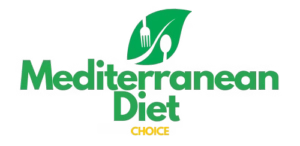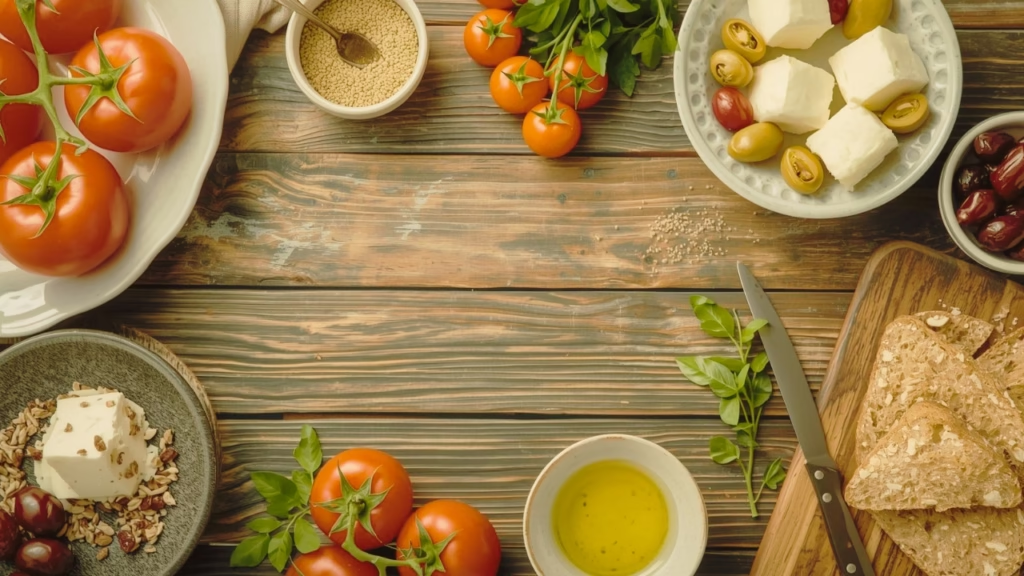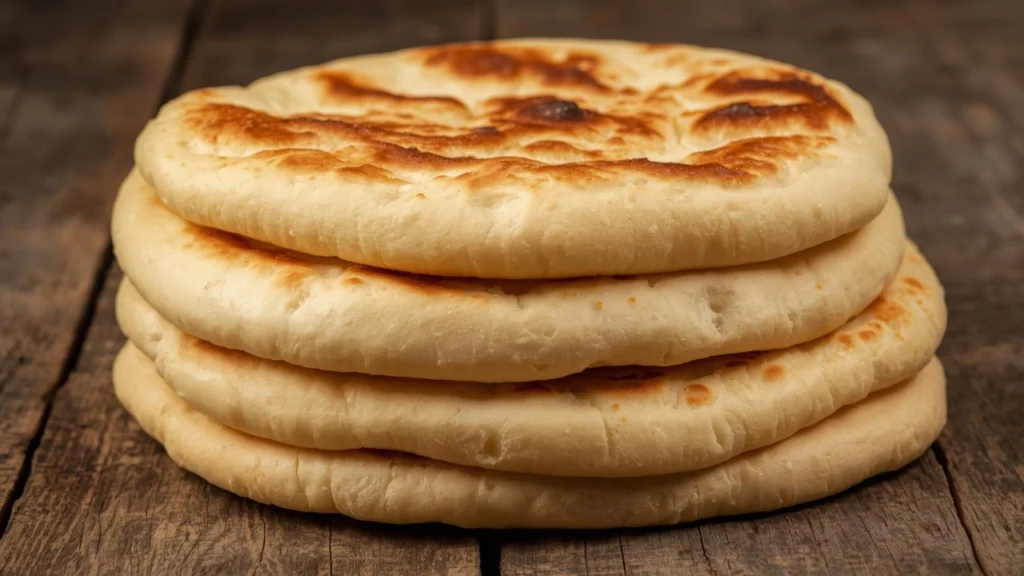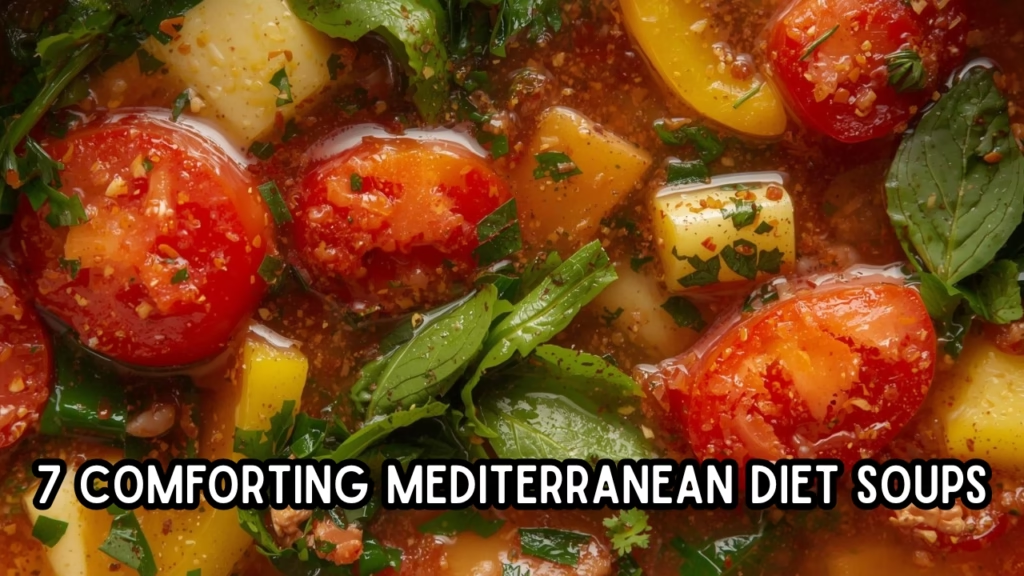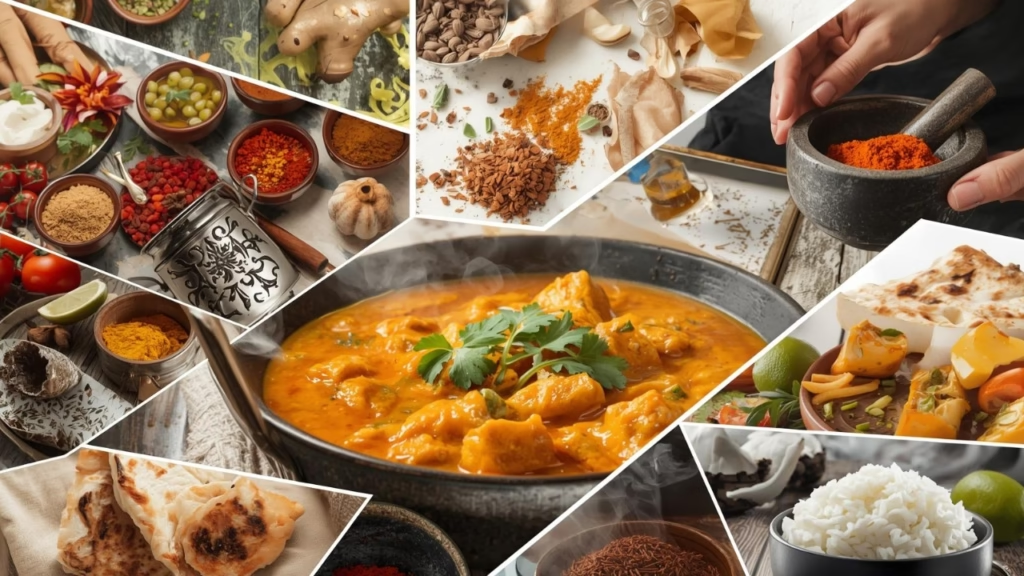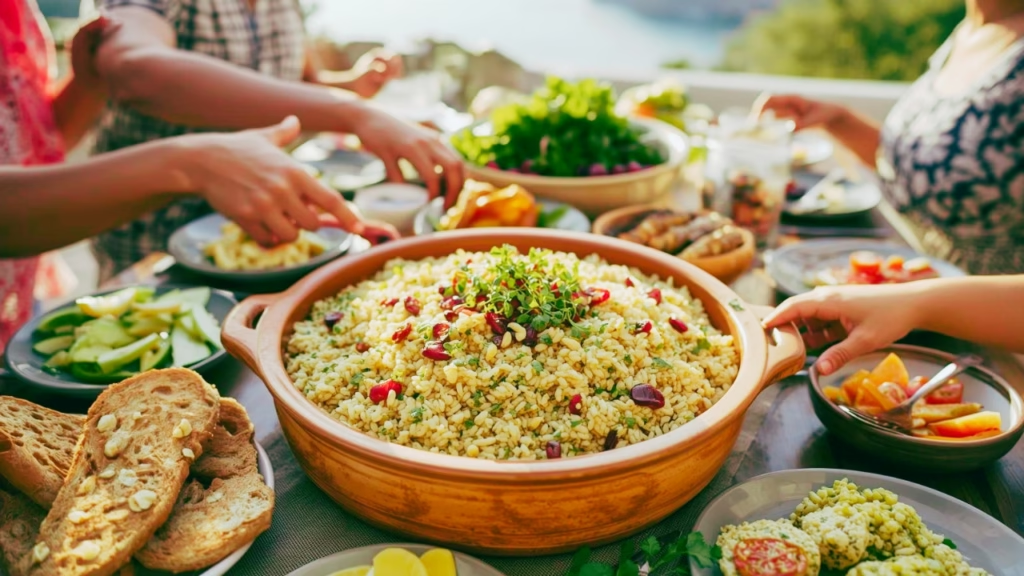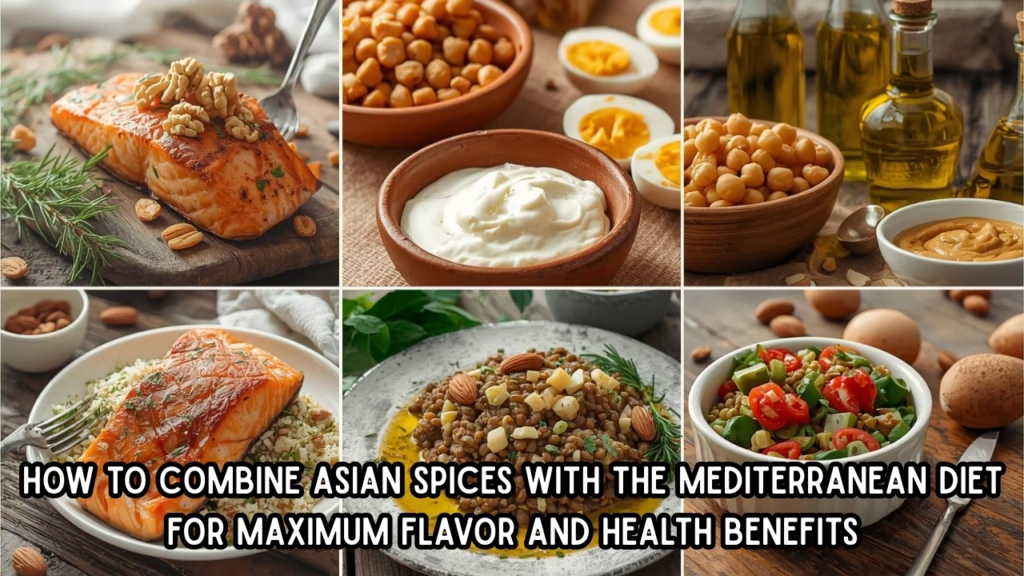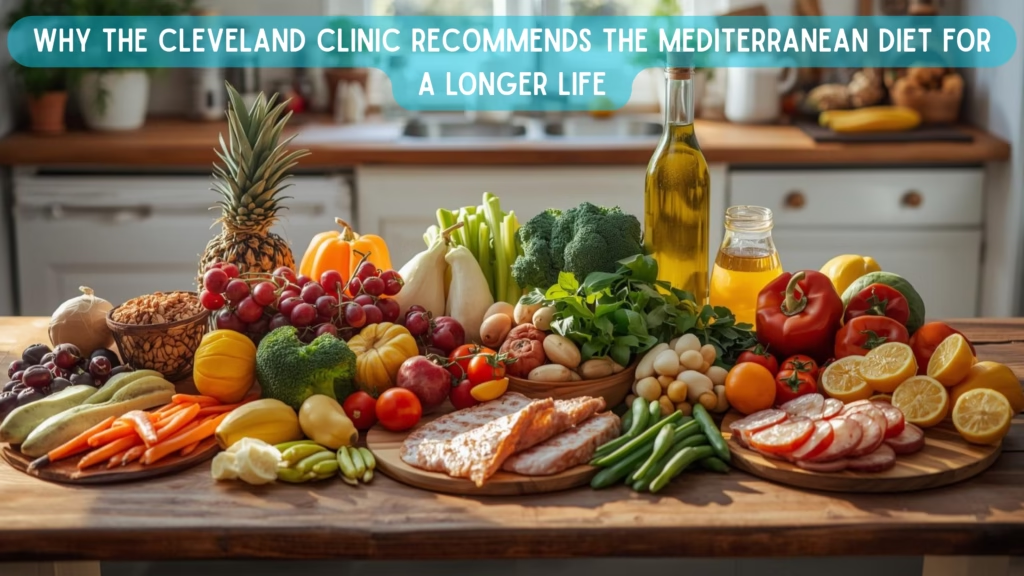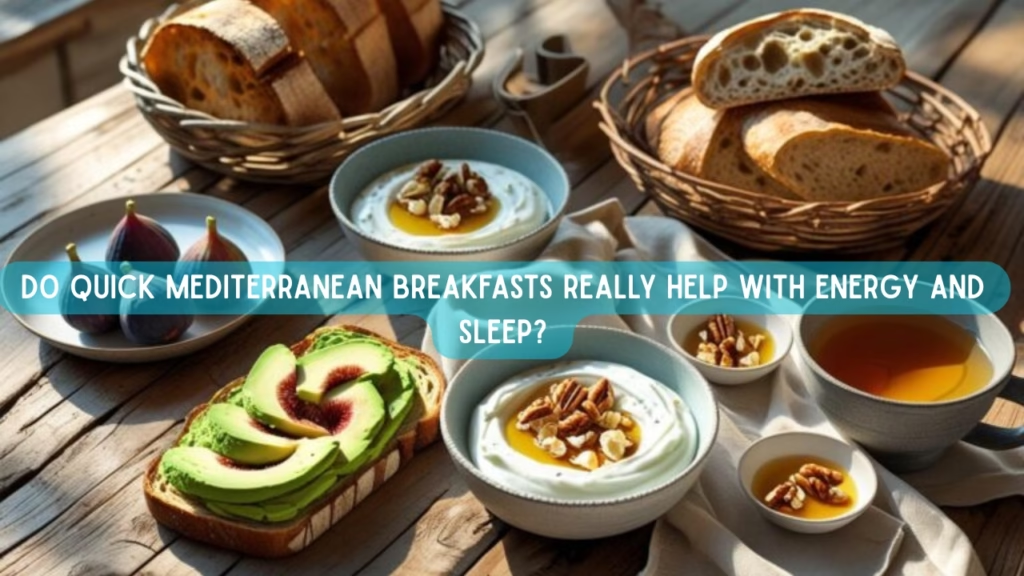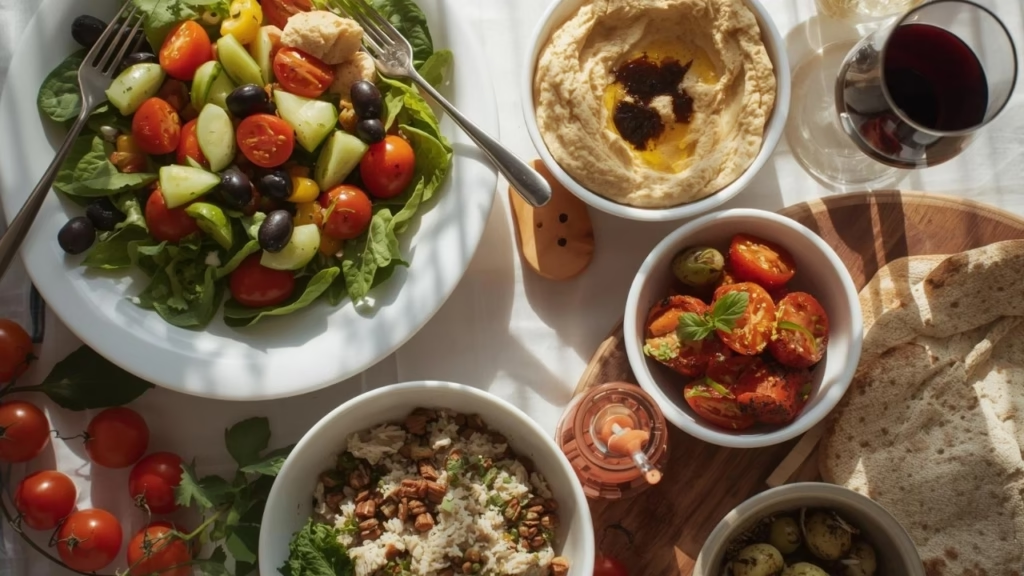What Are the Best High-Protein Mediterranean Foods That Actually Keep You Full?
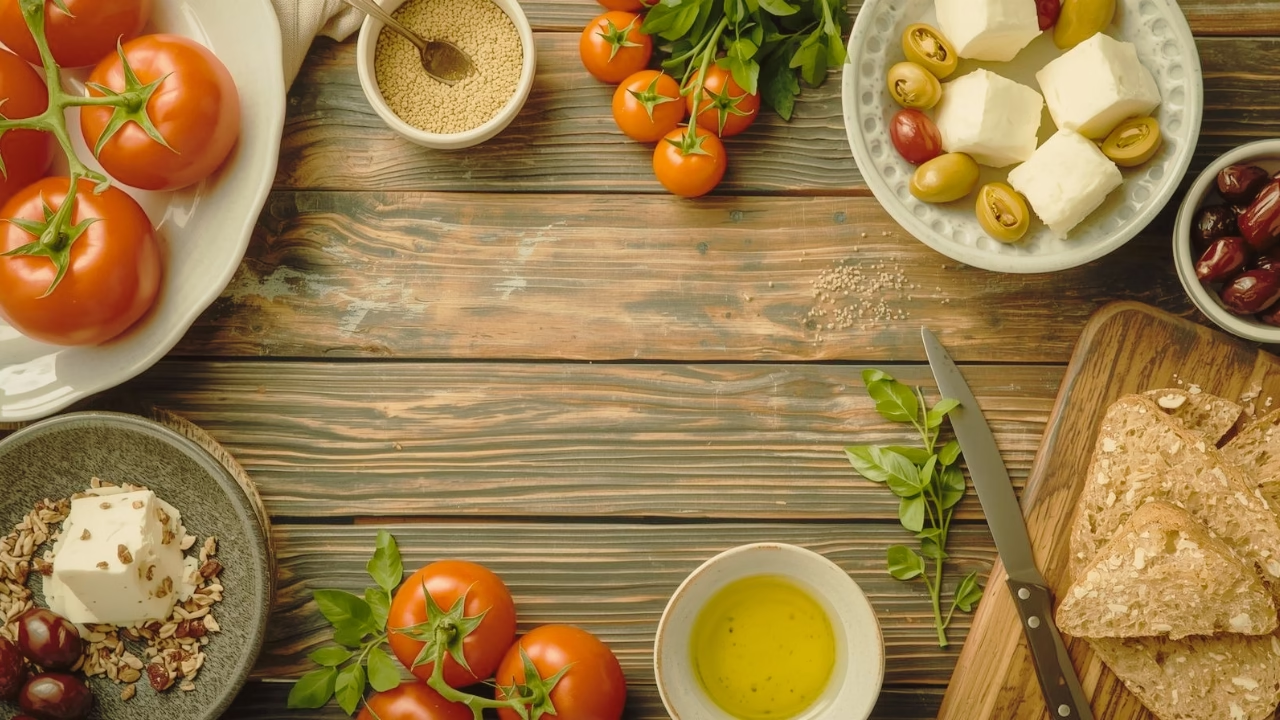
The answer is simple: foods like Greek yogurt, chickpeas, fatty fish, eggs, lentils, and nuts. These high-protein Mediterranean foods don’t just fill you up—they keep you satisfied for hours because they combine protein with healthy fats and fiber. That’s the magic trio your body needs to stop those constant hunger pangs and afternoon energy crashes.
I’m talking about real food here, not protein bars or shakes. Just whole ingredients that people around the Mediterranean have been eating for centuries while staying healthy, energized, and yes, lean.
Why High-Protein Mediterranean Foods Work Better Than Regular Protein
Here’s something most people don’t realize: protein alone is good, but protein paired with fiber and healthy fats is incredible. That’s exactly what Mediterranean eating does naturally.
When you eat protein, it slows down your digestion. This means you stay fuller longer and don’t find yourself raiding the pantry two hours after lunch. Your blood sugar stays stable instead of spiking and crashing like it does with sugary or carb-heavy meals. You avoid that 3 PM slump where you’d normally reach for coffee and cookies.
But high-protein Mediterranean foods take this further. They also give you omega-3 fatty acids from fish, fiber from legumes, probiotics from yogurt, and antioxidants from nuts and seeds. Your body gets sustained energy, your muscles get the building blocks they need, and your brain functions better.
Some people even notice they sleep better when they eat this way. Foods like salmon, walnuts, and chickpeas contain nutrients like tryptophan and magnesium that actually support deeper, more restful sleep.
The best part? You don’t need to count macros or weigh your food. Just build meals around these core ingredients and you’re already ahead of most trendy diets.
The Best High-Protein Mediterranean Foods You Should Be Eating
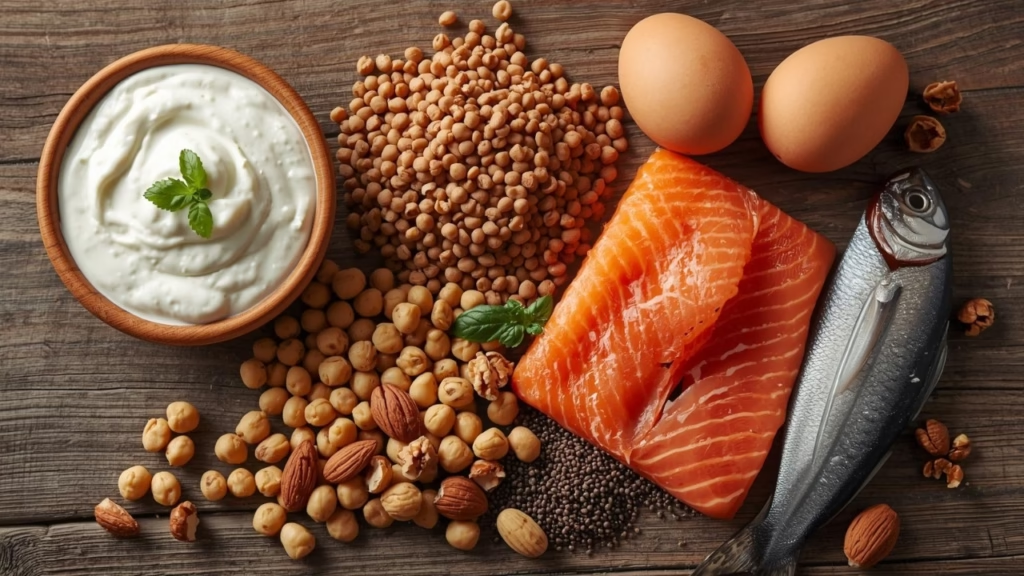
Let’s get specific. These are the staples you want in your kitchen if you’re serious about staying full and feeling good.
Greek yogurt is probably the easiest place to start. It’s loaded with protein—usually around 15-20 grams per cup—and packed with probiotics that support your gut health. Skip the flavored versions with added sugar and just buy plain. Add your own fruit or a drizzle of honey.
Chickpeas are ridiculously versatile. Toss them in salads, blend them into hummus, roast them for a crunchy snack, or throw them in soup. They’re high in both protein and fiber, which is exactly why they keep you full.
Lentils are cheap, cook fast, and work in everything from soups to salads to veggie burgers. They’re a complete protein source for plant-based eaters and cost practically nothing compared to meat.
Eggs are the original fast food. They’re a complete protein containing all nine essential amino acids your body needs. Scramble them, boil them, poach them, or bake them into veggie-loaded frittatas.
Fatty fish like salmon, sardines, and mackerel give you protein plus omega-3 fatty acids that reduce inflammation and support brain health. These are the foods that make the Mediterranean diet famous for heart health.
Nuts and seeds—almonds, walnuts, chia seeds, flaxseeds—are perfect for snacking or adding crunch to meals. They’re calorie-dense, so you don’t need much. A small handful keeps you satisfied between meals.
Chicken and turkey work beautifully with Mediterranean flavors like lemon, garlic, oregano, and olive oil. They’re lean protein sources that soak up whatever seasonings you throw at them.
Quinoa cooks in about fifteen minutes and gives you complete plant protein. Use it like rice as a base for bowls, or mix it into salads for extra substance.
Tofu and tempeh are Mediterranean-friendly if you’re eating plant-based. Marinate them in olive oil, lemon, and herbs and they absorb all that flavor.
Cottage cheese has made a comeback recently, and for good reason. It’s high in protein, works for both sweet and savory dishes, and keeps you full for hours.
How to Actually Build Meals with High-Protein Mediterranean Foods
Having a list of ingredients is useless if you don’t know what to do with them. Here’s how to turn these foods into actual meals you’ll want to eat.
Breakfast Ideas That Keep You Full Until Lunch
Start with a Greek yogurt bowl topped with fresh figs or berries, chopped walnuts, and a drizzle of honey. It takes three minutes to assemble and keeps you satisfied all morning.
Make a vegetable omelet loaded with spinach, bell peppers, tomatoes, and crumbled feta cheese. Cook it in olive oil and you’ve got a Mediterranean breakfast that tastes like vacation.
Try overnight oats with almonds, tart cherries, chia seeds, and a splash of almond milk. Prep it the night before and grab it on your way out the door.
Lunch Options That Don’t Leave You Hungry
Build a chickpea salad with cucumbers, cherry tomatoes, red onion, feta cheese, and a simple olive oil and lemon dressing. Add some whole-grain pita if you need more substance.
Make a big pot of lentil soup seasoned with garlic, onions, cumin, and fresh herbs. It’s filling, warming, and tastes even better the next day.
Create a quinoa bowl with grilled chicken, roasted vegetables like zucchini and eggplant, and a tahini drizzle. This is the kind of lunch that powers you through the afternoon without a crash.
Dinner Recipes That Feel Like Comfort Food
Grill salmon and serve it over farro with sautéed spinach and a squeeze of lemon. Simple, elegant, and packed with protein and omega-3s.
Stuff bell peppers with a mixture of quinoa, lentils, diced tomatoes, and herbs. Bake until tender and top with a little feta cheese.
Make chicken souvlaki by marinating chicken in olive oil, lemon juice, garlic, and oregano. Grill it and serve with tzatziki sauce and a big Greek salad.
Smart Strategies for Eating More High-Protein Mediterranean Foods
Knowing what to eat is one thing. Actually doing it consistently is another. Here’s how to make it easy.
Batch cook your proteins on Sunday. Grill a few chicken breasts, bake some salmon, or cook a big pot of lentils. Having protein ready to go makes healthy eating effortless during the week.
Keep smart snacks visible. Put a container of mixed nuts on your counter. Keep boiled eggs in the fridge. When you’re hungry between meals, you’ll reach for these instead of chips or cookies.
Always pair your protein with vegetables. This isn’t just about nutrition—the fiber from vegetables works with protein to keep you even fuller. Plus, your meals look better and taste more interesting.
Rotate between plant and animal proteins throughout the week. This gives you variety, ensures you get different nutrients, and keeps your taste buds from getting bored.
Stay hydrated. Drink water consistently throughout the day. Sometimes what feels like hunger is actually thirst. Plus, proper hydration helps your body process protein more efficiently.
What Your Plate Should Actually Look Like
The Mediterranean approach isn’t about strict ratios, but here’s a general guide that works well:
Fill about half your plate with colorful vegetables—leafy greens, tomatoes, peppers, zucchini, whatever looks good and fresh.
Use about a quarter of your plate for protein—grilled fish, chicken, legumes, eggs, or whatever you’re using.
Fill the remaining quarter with whole grains like quinoa, farro, bulgur, or whole-grain bread.
Add healthy fats through olive oil, avocado, nuts, or seeds.
This naturally gives you balanced nutrition with roughly 20-25% of your calories from protein, 40-50% from carbohydrates (mostly from vegetables and whole grains), and 25-30% from healthy fats.
You also end up with around 25-30 grams of fiber daily, which is crucial for digestion, keeping cholesterol in check, and staying full between meals.
Why This Approach Works Long-Term
The beauty of high-protein Mediterranean foods is that they’re not diet foods. They’re just food. Real, delicious, satisfying food that happens to be incredibly good for you.
You’re not eliminating entire food groups or counting points. You’re not drinking meal replacement shakes or eating tasteless chicken breast with steamed broccoli. You’re eating the way humans have eaten for thousands of years in one of the healthiest regions on Earth.
Within a few days of eating this way, most people notice they’re not constantly thinking about food. They have more consistent energy throughout the day. They stop experiencing those intense cravings that derail other attempts at healthy eating.
Long-term, eating high-protein Mediterranean foods is linked to lower risk of heart disease, diabetes, and obesity. It supports healthy aging, better brain function, and yes, easier weight management without feeling deprived.
Getting Started Is Simpler Than You Think
You don’t need to overhaul your entire kitchen or take a cooking class. Just start making small swaps.
Tomorrow morning, instead of cereal or a muffin, have Greek yogurt with nuts and fruit. Notice how much longer you stay full.
For lunch this week, replace your usual sandwich or fast food with a chickpea salad or lentil soup. Pay attention to your energy levels in the afternoon.
At dinner, swap your typical starch-heavy meal for grilled fish with roasted vegetables and a grain like quinoa or farro.
Keep it simple, stay consistent, and you’ll quickly understand why people around the Mediterranean have been eating this way for centuries. It just works.
SOURCES
We carefully draw from trusted, evidence-backed sources—including peer-reviewed studies, respected academic institutions, and authoritative health organizations—to ensure the accuracy and reliability of every insight we share.
Harvard T.H. Chan School of Public Health – The Nutrition Source: The Mediterranean Diet
Mayo Clinic – Mediterranean Diet for Heart Health
Cleveland Clinic – High-Protein Foods That Keep You Full
Harvard Health Publishing – Protein: Moving Closer to Center Stage
American Heart Association – Fish and Omega-3 Fatty Acids
You Might Also Like
How to Make Homemade Pita Bread. A Simple Step-by-Step Guide
Pita Bread Making Pita bread represents one of the oldest forms of bread still commonly…
7 Comforting Mediterranean Diet Soups Made with Simple, Healthy Ingredients
Mediterranean diet soups represent a cornerstone of one of the world’s healthiest eating patterns, combining…
I’m from Bhutan. Here’s How I Combined Local Foods with the Mediterranean Diet for Better Energy
Growing up in Phuntsholing, I never imagined that the traditional Bhutanese foods my grandmother cooked…
Mediterranean Diet Whole Grains: The Complete Guide to Heart Health and Longevity
Mediterranean Diet Whole Grains: The Complete Guide to Heart Health and Longevity Mediterranean diet whole…
How to Combine Asian Spices with the Mediterranean Diet for Maximum Flavor and Health Benefits
Asian spices with the Mediterranean diet create an extraordinary culinary fusion that doesn’t just taste…
Cleveland Clinic Mediterranean Diet: Why It’s Best for a Longer Life
Why the Cleveland Clinic Recommends the Mediterranean Diet for a Longer Life Cleveland Clinic Mediterranean…

Hello! I’m Sangay Choda, the creator of Mediterranean Diet Choice.
I’m not a doctor or licensed dietitian — I’m a health enthusiast who has spent years exploring the Mediterranean lifestyle and its proven benefits for long-term wellness, balance, and longevity.
My interest in this way of living began with a simple goal: to understand how everyday food choices can protect our hearts, improve energy, and support a happier life. Over time, I have researched and curated information from trusted medical and nutritional authorities, such as:
Harvard T.H. Chan School of Public Health
Mayo Clinic
World Health Organization (WHO)
National Institutes of Health (NIH) and more
I take complex, research-backed insights from these sources and transform them into easy-to-read, practical guides that anyone can apply — especially those looking to live healthier without restrictive diets or complicated plans.
While I do not offer medical advice, every article on this website is created with care, transparency, and a commitment to evidence-based information. My mission is to help readers make informed choices for a balanced, Mediterranean-inspired lifestyle.
Disclaimer: The content on this site is for informational and educational purposes only and should not be used as a substitute for professional medical advice. Always consult a qualified healthcare provider before making significant health or dietary changes. For more details, please visit our Disclaimer page.
For additional information about this website and its purpose, visit our About page. You can also review our Terms & Conditions to understand your rights and responsibilities when using this site.
Thank you for visiting Mediterranean Diet Choice.If you have questions, suggestions, or wish to collaborate, feel free to reach out at contact@mdietchoice.com or contact us.
